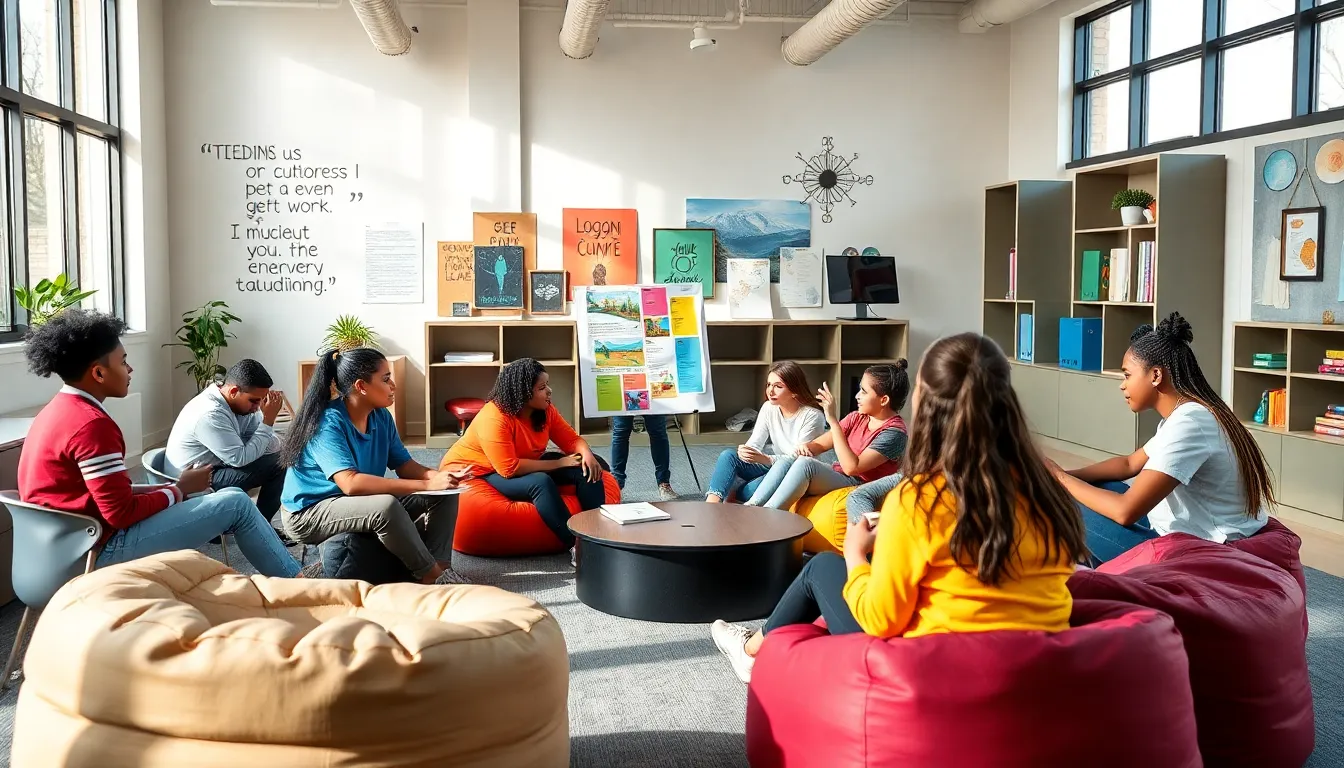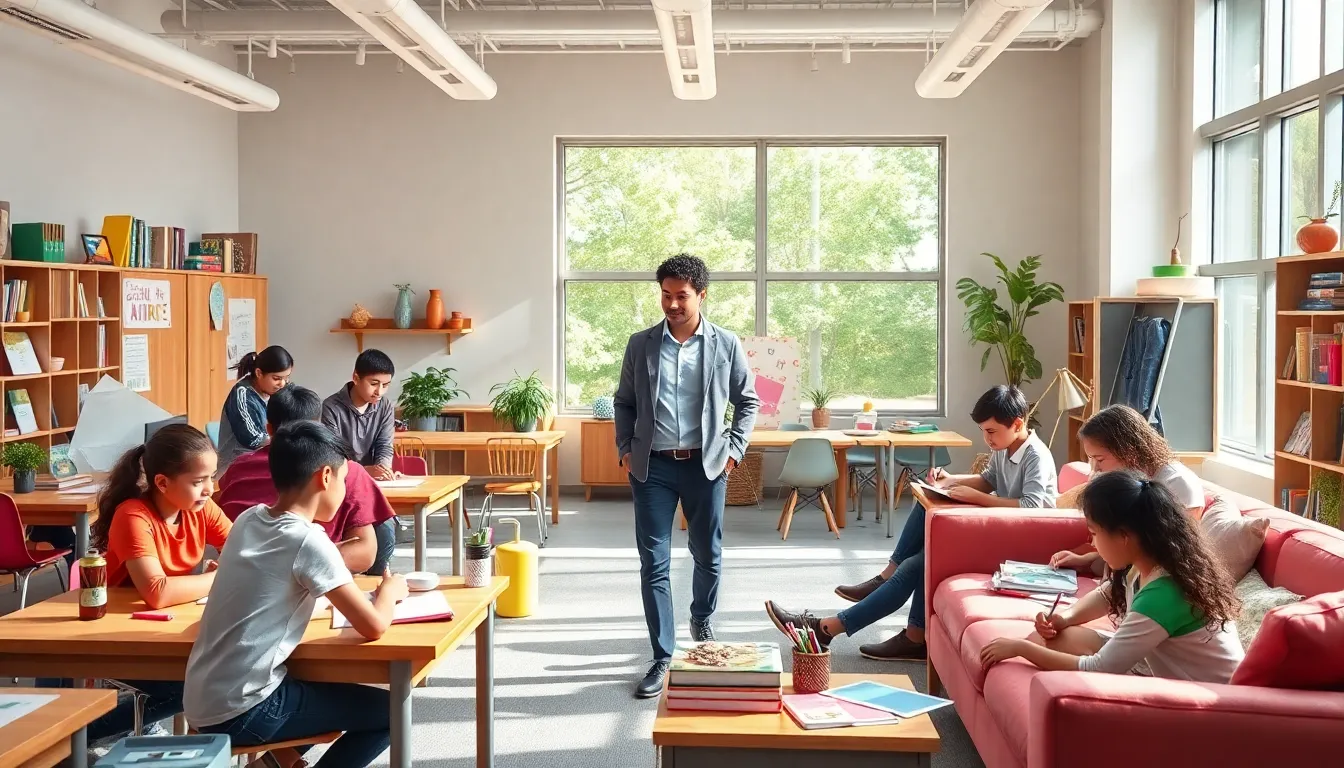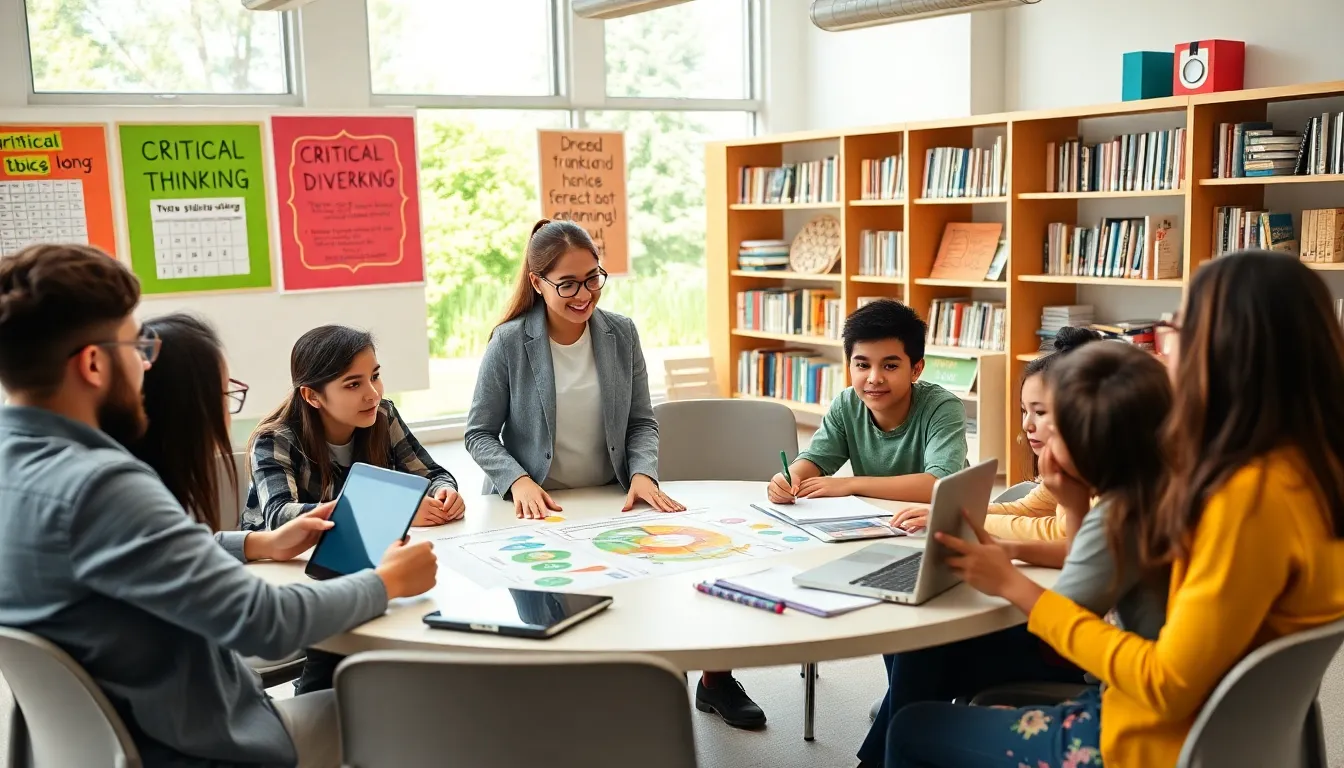Imagine a school with no walls, where creativity reigns, and the only standardized test is measuring how much fun you’re having. Alternative education schools might just be the quirky alternative you didn’t know you needed. With innovative approaches to learning, these schools break the mold of traditional education, offering a rich tapestry of experiences that cater to a variety of learning styles. So, if you’re looking to spice up the educational journey or find a fit for that little genius at home, immerse, this might be exactly what you’re looking for.
Table of Contents
ToggleUnderstanding Alternative Education

Alternative education refers to non-traditional educational practices that are often designed to serve students who may not thrive in conventional settings. These schools emphasize personalized learning, creativity, and often a holistic approach to education. Alternative education programs cater to a diverse range of learners, including those seeking experiential learning and those needing specialized support due to various challenges.
The philosophy behind alternative education schools prioritizes student engagement, well-being, and the development of critical thinking skills. They champion the idea that education should not only be about academic achievements but also about nurturing individuals who are curious, innovative, and socially responsible.
Types of Alternative Education Schools
Alternative education schools come in many flavors, each tailored to meet the diverse needs of learners. Here are a few popular types:
Montessori Schools
These schools focus on self-directed activity, hands-on learning, and collaborative play. Children work through a carefully prepared environment with learning materials suited to their developmental stages.
Waldorf Schools
Waldorf education emphasizes creativity and the arts, integrating various subjects around a central theme. Teachers guide students through storytelling, music, and craftwork, fostering a love for learning.
Open Schools
Open schools prioritize a flexible learning environment, often allowing students to move freely between learning areas and choose their learning paths. These schools promote student agency and independence.
Democratic Schools
In democratic schools, students have a say in their education. They participate in decision-making processes about curriculum and school policies, ensuring that everyone’s voice is heard.
Online and Hybrid Schools
With technology at their fingertips, many students benefit from online and hybrid models that combine in-person instruction with online courses, giving students flexibility in their learning schedules.
Benefits of Alternative Education
The benefits of alternative education schools can be numerous, depending on the model and student needs. Here’s a look at some standout advantages:
Personalized Learning
One of the key benefits of alternative education is the emphasis on personalized learning. Educators tailor their teaching methods and materials to fit each student’s unique learning style, promoting better engagement and understanding.
Holistic Development
These schools often focus on the overall development of the student, socially, emotionally, and academically. This approach ensures that students are not only prepared for exams but also equipped for life beyond the classroom.
Enhanced Creativity
Alternative education encourages creative problem-solving and independent thinking. This often leads to students passionately exploring subjects that align with their interests, fostering a lifelong love for learning.
Flexible Curriculum
With the ability to adjust curricula based on student needs and aspirations, these schools can adapt quickly to emerging trends and interests, making learning more relevant.
Supportive Environment
Small class sizes in alternative education schools may foster closer teacher-student relationships. This supportive atmosphere often allows students to feel more comfortable expressing their thoughts and exploring new ideas.
Challenges and Considerations
While alternative education has a lot to offer, it’s essential to consider some potential challenges:
Limited Resources
Some alternative schools may operate on tighter budgets than traditional schools, potentially impacting the availability of resources, facilities, and extracurricular activities.
General Acceptance
Not everyone understands or values alternative education. Some parents and guardians may have reservations, preferring the familiarity of traditional schooling. This might lead to a lack of support from the broader community.
Diverse Standards
Not all alternative schools are created equal. Variability in educational quality and accreditation can make it essential for parents to research each institution thoroughly.
Adjustment for Students
For students accustomed to traditional education, adapting to the self-directed nature of alternative schooling can be challenging initially. It’s crucial for families to prepare and support their children during this transition.
How to Choose the Right Alternative Education School
Choosing the right alternative education school involves careful consideration. Here are several key factors to help guide your decision:
Identify Your Educational Values
Determine what you want your child to gain from their education. Clarifying your priorities can simplify the selection process and help you find a school that aligns with your values.
Visit Schools
Nothing beats a first-hand experience. Tour potential schools and meet educators to assess the environment and teaching methods. Observing classes can reveal whether the school’s culture resonates with your expectations.
Evaluate Curriculum Options
Different schools will adopt varying curricular approaches. Assess how each school’s curriculum reflects your child’s learning style and interests. Are they engaging in hands-on experiences? Are they using technology effectively?
Consider School Community
A collaborative environment can be vital for your child’s success. Understanding the school community can give insight into how they support each other and foster an enriching experience.
Success Stories and Case Studies
Alternative education has produced remarkable success stories that inspire and encourage. Here are a few examples:
From Struggling Learner to Scholar
Take the case of a teenager who enrolled in a project-based learning environment after experiencing difficulties in a traditional setting. With hands-on approaches and personalized mentorship, they transitioned from struggling academically to excelling in a college environment.
Career Pathways
Many alternative education schools emphasize real-world applications. Graduates report feeling better prepared for careers due to their engagement with internships and entrepreneurial projects, with many going on to launch successful businesses.
Lifelong Learners
Countless students from alternative education schools cite the joy of learning as a lifelong pursuit. They credit their educational experiences as vital in fostering curiosity, adaptability, and resilience, qualities that serve them well into adulthood.
Future Trends in Alternative Education
As education continues to evolve, several trends suggest what the future might hold for alternative education:
Integration of Technology
With the rise of online learning and digital tools, alternative education schools will likely continue incorporating technology into their curricula, ensuring students are prepared for increasingly tech-driven environments.
Emphasis on Social-Emotional Learning
Future models will likely prioritize social-emotional learning, providing students with essential skills such as empathy, resilience, and teamwork, preparing them for both academic challenges and personal growth.
Increasing Diversity
As education becomes more inclusive, alternative schools may expand to serve a wider variety of backgrounds, catering to students with special needs or unique talents, eventually enriching the educational landscape.



